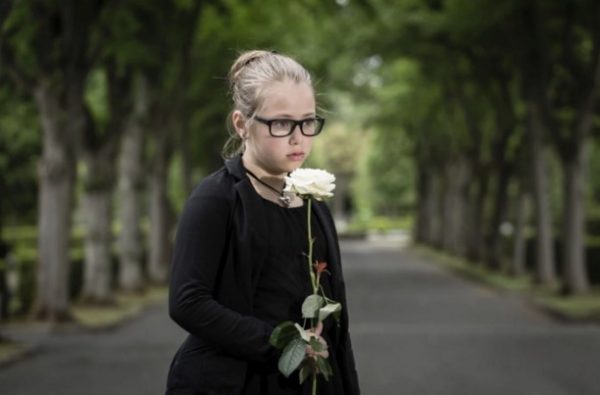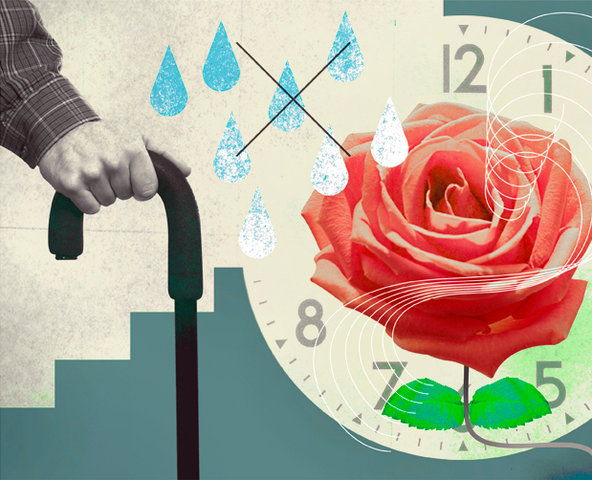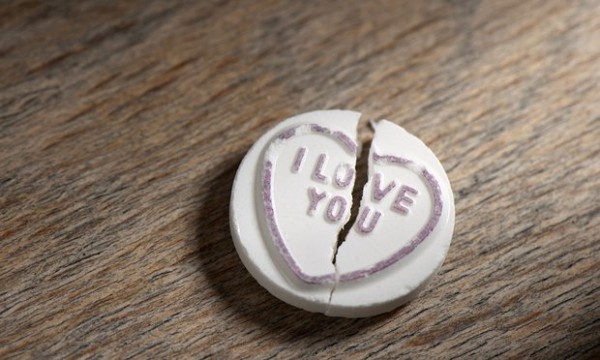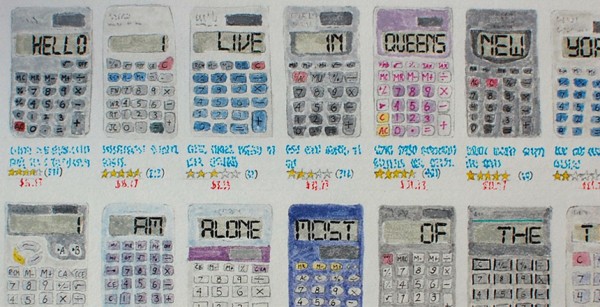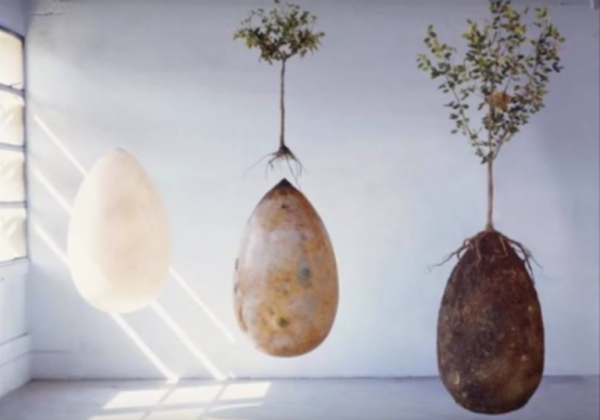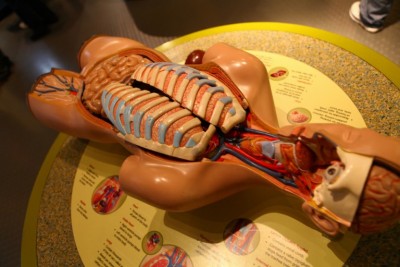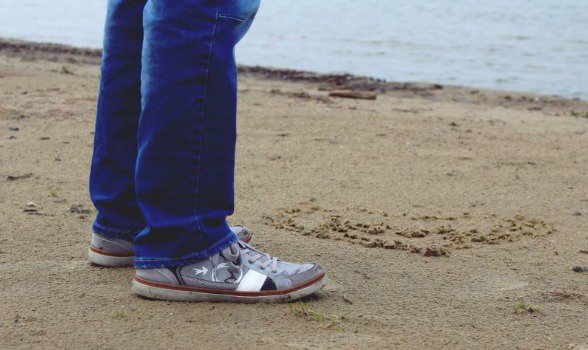By Naomi Shulman
“Stella? Where are you?”
I was looking for my 11-year-old daughter, who had abruptly left a dinner party with our closest friends. Her friend sat alone in the living room, abandoned. I was going to talk to Stella about proper host behavior when I discovered her in her darkened bedroom, curled up in the bottom bunk of her bed.
“Stella?” I asked, my tone softening as I sat next to her. Her head down, she opened her palm and showed me the bit of broken glass. And then she leaned wordlessly in toward me, burying her face in my lap.
***
Last year, our children lost three of their grandparents in four months. Their Grandma Eadie, my husband Chris’s mother, died in early August after a year-long bout with colon cancer. Their Grandpa Chuck, Chris’s father, died seven weeks later, essentially of a broken heart. Then their Baba, my mother, died in early November, of multiple myeloma.
And through it all, my younger daughter, Stella, did not cry.
This surprised all of us, Stella perhaps the most. When we had told the girls that Eadie had cancer, it had been Stella who had burst into tears, then barraged us with questions: Would she definitely die? But when would she die? Was there any way a doctor could cure her? Meanwhile her older sister Lila sat motionless across the table, silently ashen. When Stella paused for breath, I turned to her sister. “Lila? You’re awfully quiet.”
Lila blinked at me slowly. “Well, I don’t like it,” she announced irritably. And that was that.
But at Eadie’s funeral, Lila sobbed openly, her body shaking, her face wet. When I stood at the podium to speak, I glanced down at my girls and found that I could not look at Lila; her tears would prompt my own and I would lose my composure. I turned instead to Stella, who sat still in her seat, eyes dry, mouth shut in a straight line, and I let her be my rock as I made my way through the eulogy I’d written for my mother-in-law, the woman who for two decades had been a second mother to me.
The same at Chuck’s funeral. And my mother’s shiva service. Lila: tears. Stella: blank expression.
“Why am I not crying?” Stella asked me at one point.
“Don’t worry,” I said, “everyone grieves in their own way, at their own pace.”
But watching Stella’s stony affect, I found myself asking the same question. Why wasn’t she crying? And should I be doing something about it?
She certainly wasn’t taking a cue from me. I had started weeping the day Eadie was diagnosed, too, and the ensuing year felt like a long descent into a bottomless grief — the anticipation of it, the inevitable arrival of it, and its long, tenacious aftermath.
My worst episode was the day after my mother died; the moment I awoke, before I even opened my eyes, I felt the swelling tide overtake me and I wailed. Chris reached over to hold me as I had held him in the front seat of our car three months earlier, after our last visit with his mother, who had confusedly been trying to crawl out of her own skin to escape her relentless, unavoidable pain.
I was rocking, wailing, keening. I recognized in myself what I’d seen him, and what I’d seen in Lila in the front row at the funeral: head-between-the-knees gasping grief. We’d all been in the throes of it except Stella, the smallest and youngest of us, who watched quietly, her face unreadable.
“Don’t make her feel broken,” my therapist gently warned me. My initial response to her — you’re normal — had been spot on, my therapist confirmed. “Young children process grief differently. You can’t expect it to look the same as yours.”
Months passed. We navigated the ache of the holidays, hollow and empty, missing so many grandparents who had been there the year before. I noticed the length of time between each cathartic cry grew longer and longer. A bit of music here, a reminder of a joke there, and grief snuck back in like a ninja, overtaking me for a moment, but I could put my head in my hands for a moment, then come back up for air and keep moving forward.
A few weeks ago, Chris and his brother felt it was time to deal with their parents’ belongings. Some items were being donated, some sold. Finally came a sort of backwards moving day; rather than heading into a new adventure, my in-laws’ things were retrieved, their adventures having come to a close. Chris hauled a trailer filled with furniture and artwork from his parents’ condo, and one by one we found places in our home to integrate each item.
Nearly as an afterthought, he picked up some of the tchotchkes lining his parents’ shelves. A tiny figurine of two koalas clutching each other — I’d always found it hokey, but now it felt precious. A small turquoise bowl, always empty, waiting for something to fill it. And several pieces of Venetian glass fashioned to look like wrapped candies, forever waiting for someone to unwrap them and enjoy.
***
Here in her dark bedroom, in Stella’s moist, open palm, was a piece of that Venetian glass candy, broken in two. Stella had always been simultaneously drawn to them and slightly frustrated by them — they looked so delicious, but they were just a tease. Chris had handed one of these glass candies to Stella after we finished bringing in the bulk of his parents’ things — it was the only one of her grandparents’ belongings that had been offered to her and her alone.
She’d carried it with her the rest of the day, a treasure and talisman, and was showing it to our guests when she tripped and dropped it. It was the sort of thing that I warned her about all the time. Be careful, take care of your things, you’ll lose them. But now was not the time for any of that. And anyway, taking care only goes so far. Everything breaks. Everything gets lost. Stella had learned that as well as anyone, earlier than many.
“Can we glue it back?” she asked as her sobs began to subside.
“Maybe,” I said, but I knew it would never be the same. It would never fool anyone into thinking it was real ever again. We’d be able to see the fissure immediately, proof of its vulnerability. “We can try.” We didn’t, though. It sits on a top shelf of her bedroom in two pieces, a sharp reminder.
We stopped talking. I rocked back and forth on her bed, holding her close, reverting to the keening motion every human leans into when things get thatbad. It was the same way I held my husband in August and again in September, and the same way he reached for me in November, the wordless soothing rhythm of a parent and child.
Our guests would be okay downstairs. We sat together in the dark. And I let her cry, and cry, and cry. Broken open, edges jagged, ready to grieve.
Complete Article HERE!

